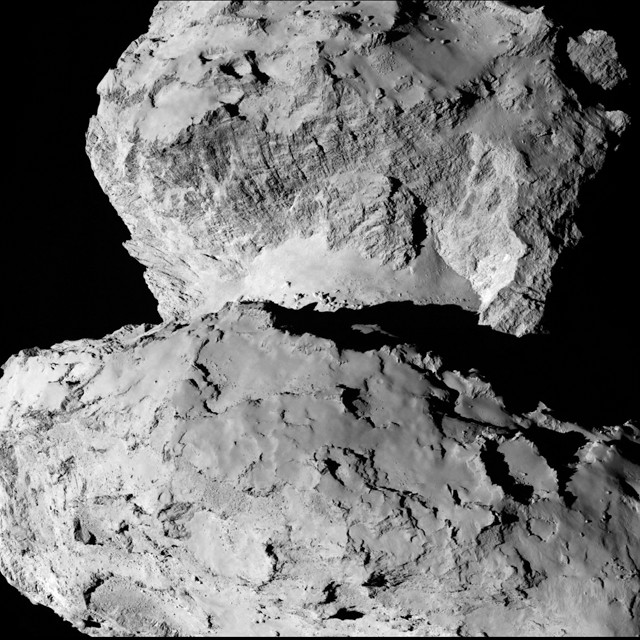
by Mary Caperton Morton Monday, April 20, 2015

Comet 67P as seen by the Rosetta spacecraft on Aug. 7, 2014. Credit: European Space Agency.
Scientists have long suspected that much of the water that fills our planet’s oceans may have come from asteroids or comets that collided with the early Earth. Now, recently reported data from the European Space Agency’s Rosetta mission, which landed its Philae probe on comet 67P/Churyumov-Gerasimenko in November, appears to favor an asteroid origin story for Earth’s water.
Researchers led by Kathrin Altwegg of the University of Bern in Switzerland found that the water in 67P’s thin atmosphere has a deuterium-hydrogen ratio three times higher than that of the water in Earth’s oceans, and also higher than the ratios detected in comets from the same region of the solar system, known as the Kuiper Belt. (Deuterium is a heavy isotope of hydrogen.)
The findings suggest that the deuterium-hydrogen ratios in Jupiter Family comets like 67P — that is, comets with orbits primarily controlled by Jupiter’s gravitational field — are much more diverse than previously thought. This observation possibly reflects the fact that these comets formed at widely varying distances from the sun, such as in the Kuiper Belt near Pluto, or much farther out in the Oort Cloud, which could influence their isotopic composition.
So far, only one of 11 comets studied, the Kuiper Belt Comet 103P/Hartley 2, has been found to have a deuterium-hydrogen ratio that matched that of Earth’s water. The others displayed a wide range of values, with ratios detected in Oort Cloud comets diverging even more from the composition of Earth’s oceans.
However, previous tests on meteorites that originated in our solar system’s asteroid belt between Mars and Jupiter more closely match the composition of Earth’s water, Altwegg and colleagues noted in Science. So, despite asteroids having lower water contents than comets, impacts by many asteroids might have given Earth its oceans.
© 2008-2021. All rights reserved. Any copying, redistribution or retransmission of any of the contents of this service without the expressed written permission of the American Geosciences Institute is expressly prohibited. Click here for all copyright requests.